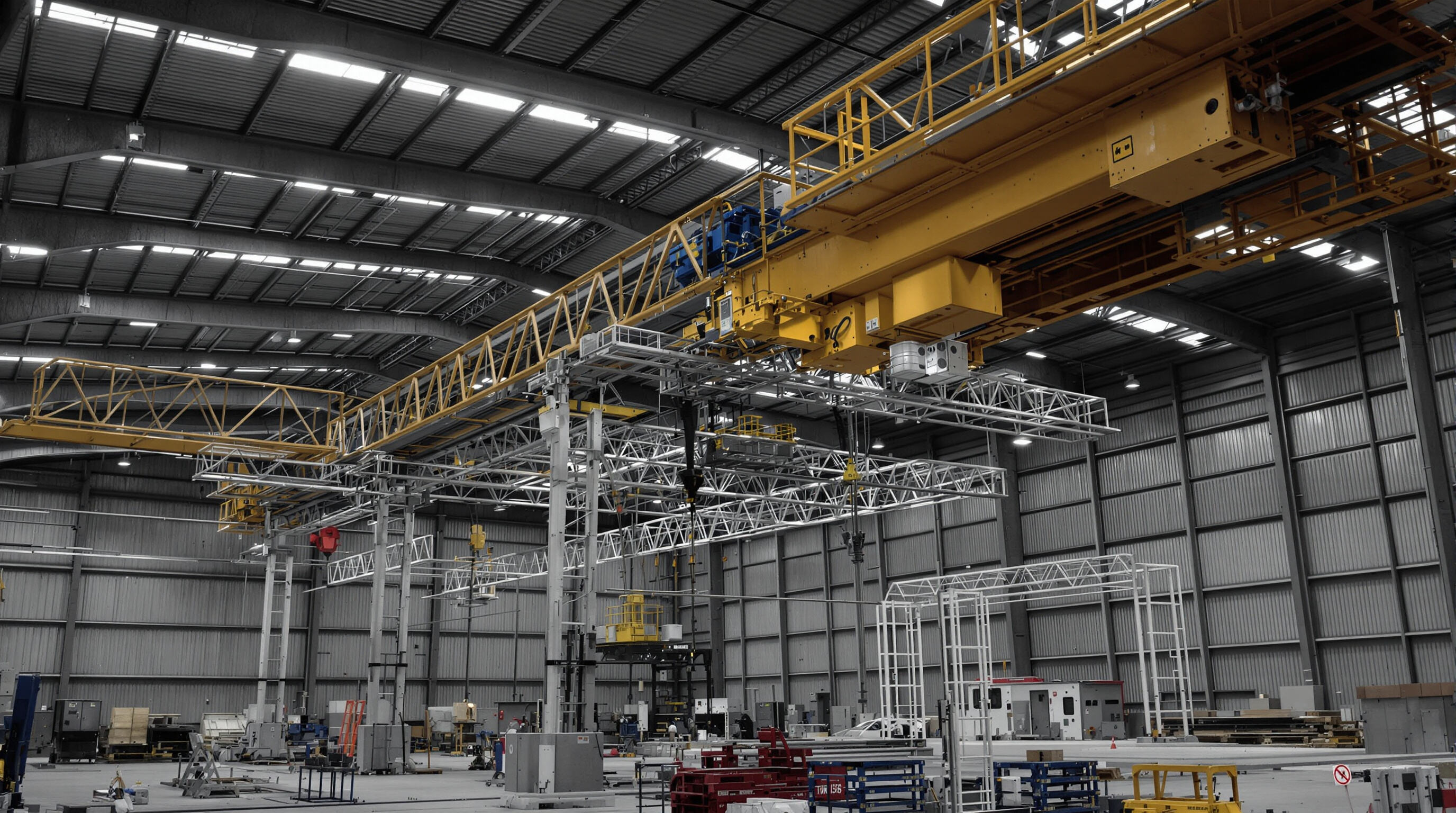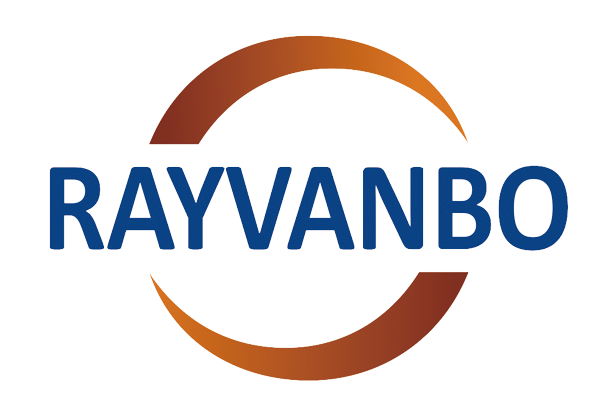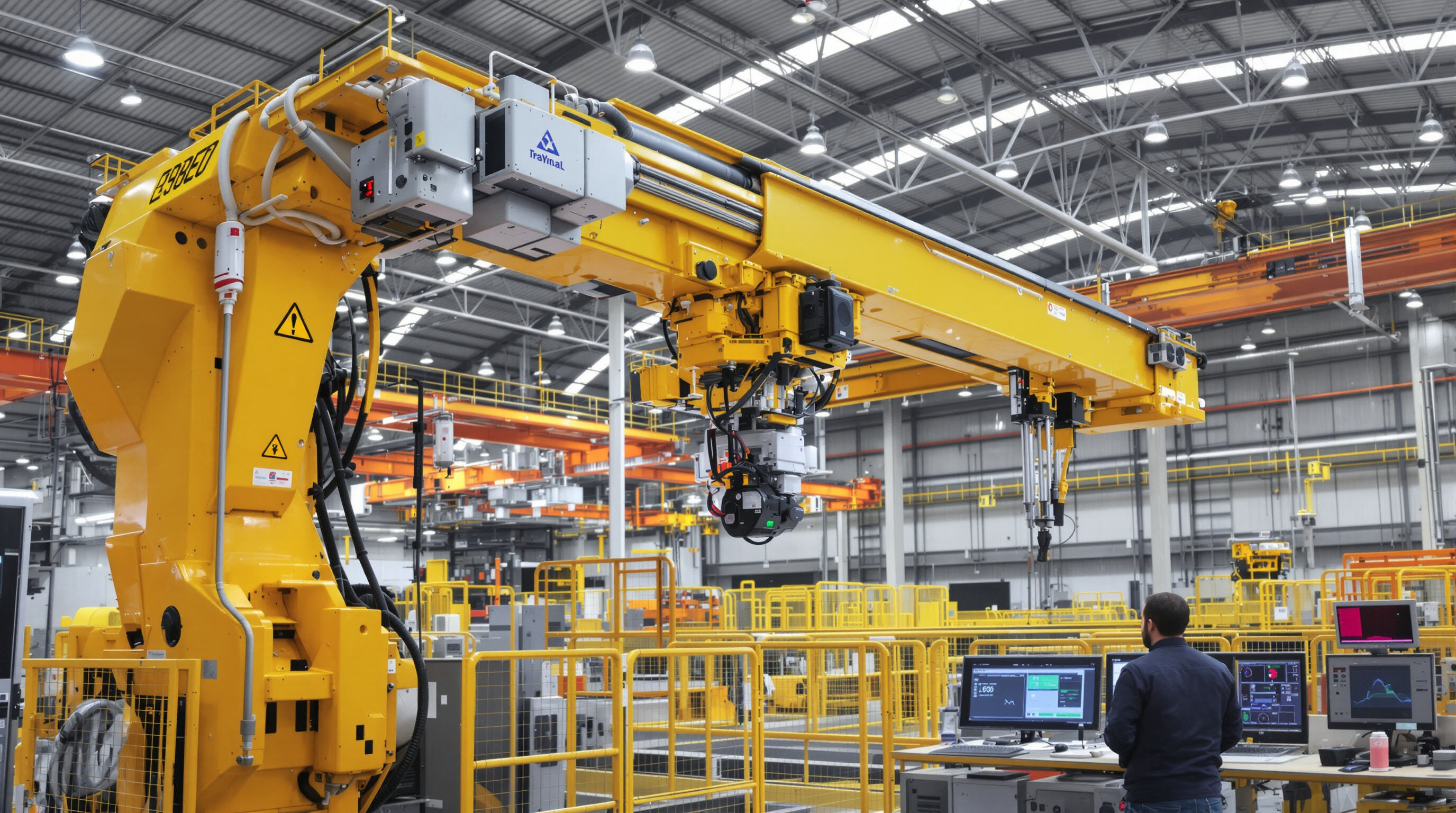Wie maßgeschneiderte Hebelösungen die Marktdifferenzierung antreiben für Brückenkranaufrüster
Die Rolle der Individualisierung bei der Erfüllung einzigartiger industrieller Anforderungen
Heutzutage fordern Fertigungsanlagen und Logistikzentren von Brückenkranaufbauern, verschiedenste vor Ort auftretende Probleme zu lösen, insbesondere bei beengten Platzverhältnissen oder ungewöhnlich geformten Lasten. Die gute Nachricht ist, dass maßgeschneiderte Hebezeuge es diesen Einrichtungen ermöglichen, ihre Arbeitsabläufe anzupassen. Dabei geht es beispielsweise um verstellbare Spannweiten von 10 bis 35 Metern sowie um äußerst präzise Lastenkontrolle mit einer Genauigkeit von einem halben Millimeter. Eine Studie, die untersuchte, wie verschiedene Industrien das Heben von Lasten handhaben, brachte vor Kurzem eine interessante Erkenntnis. Anlagen, die auf maßgefertigte Kräne setzten, verzeichneten etwa ein Drittel weniger Fehler bei der Materialhandhabung im Vergleich zu Einrichtungen, die auf Standardlösungen zurückgriffen. Wenn man darüber nachdenkt, ergibt das Sinn.
Vergleichsvorteil von Brückenkranaufrüster Angebot maßgeschneiderter Systeme
Unternehmen, die sich auf die Fertigung von Sondermaschinen konzentrieren, erzielen laut dem Industrial Machinery Review des vergangenen Jahres etwa 22 Prozent mehr Gewinn als Hersteller, die bei Standardmodellen bleiben. Warum? Weil sie wirklich komplexe Probleme lösen, mit denen andere nicht so leicht umgehen können. Denken Sie beispielsweise an die Steuerung von Materialflüssen, die sich gleichzeitig in alle Richtungen innerhalb von Automobilfabriken bewegen, oder an die Einhaltung von Sicherheitsanforderungen in gefährlichen Arbeitsbereichen. Auch bei Brückenkränen zeigt sich aktuell ein zunehmendes Interesse an individuellen Lösungen. Modulare Designansätze haben die Anzahl von Sonderaufträgen seit 2021 jährlich um rund 41 Prozent steigern können. Dies verdeutlicht, dass Unternehmen immer stärker nach flexiblen Lösungen suchen, die exakt auf ihre Kundenbedürfnisse zugeschnitten sind, anstatt versuchen, universelle Maschinen in unterschiedlichen Situationen einzusetzen.
Datenanalyse: 68 % der Hersteller berichten von höherer Kundenbindung durch maßgeschneiderte Lösungen
Laut aktueller Branchenforschung bleiben Kunden bei Kranunternehmen, die individuelle Optionen anbieten, in etwa 68 % der Fälle mindestens fünf Jahre lang erhalten. Zum Vergleich: Bei Unternehmen, die Standardgerätemodelle verwenden, liegt die Kundenbindung lediglich bei 29 %. Zudem erzielen Betriebe, die den Weg der Individualisierung gehen, ungefähr dreimal so viele Wiederholgungsaufträge. Warum ist das so? Weil solche maßgeschneiderten Lösungen es erleichtern, Technologien im Laufe der Zeit aufzurüsten. Denken Sie beispielsweise an die Integration smarter Lastsensoren, die mit dem Internet verbunden sind, oder an die Installation von Kollisionserkennungssystemen, die mithilfe von künstlicher Intelligenz funktionieren. Solche technischen Aufrüstungen ermöglichen es, das gesamte System mit den sich wandelnden Kundenbedürfnissen – vom ersten Tag bis zum fünfzigsten – mitwachsen zu lassen.
Fallstudie: Einsatz von kundenspezifischen Brückenkrainen in der Automobilindustrie
Ein führender Automobilzulieferer aus Asien benötigte Brückenkrane, die in der Lage waren, 25-Tonnen-EV-Batterien innerhalb enger 2,8-Meter-Gänge zu handhaben. Ihr brückenkranshersteller lieferte eine Lösung mit folgenden Merkmalen:
- Ein flach gehaltenes Doppelträger-Design, das die Höhe im Vergleich zu Standardmodellen um 1,2 Meter reduziert
- Automatische fahrerlose Transportsysteme (AGVs) mit einer Positionsgenauigkeit unter 5 mm
- Algorithmen für vorausschauende Wartung, die die ungeplante Stillstandszeit um 62 % reduzieren
Das Ergebnis war ein optimierter Produktionsprozess mit integrierter Skalierbarkeit, ermöglicht durch modulare Schienenerweiterungen für zukünftige Kapazitätssteigerungen.
Modulare und skalierbare Brückenkransysteme: Mehrwert für KMU durch Anpassungsfähigkeit

Neue Trends bei modularen und skalierbaren Kranlösungen für KMU
Viele kleine und mittelgroße Unternehmen suchen heutzutage nach Umschlagssystemen, die in ihr enges Budget und beengte Räumlichkeiten passen. Hersteller von Brückenkränen haben diesen Trend erkannt und begonnen, modulare Optionen zu entwickeln, deren Komponenten einfach zusammenstecken. Das Ergebnis? Laut einigen Branchenberichten aus dem vergangenen Jahr reduzieren diese Fertigteile die Installationszeit um etwa 30 bis 50 Prozent. Das bedeutet, dass Unternehmen schneller einsatzbereit sind und dennoch Raum für zukünftiges Wachstum lassen. Fertigtragbalken und verstellbare Laufbahnen ermöglichen es kleineren Betrieben, Kräne schnell einzusetzen, ohne dabei an Flexibilität einzubüßen, wenn sich die Produktionsanforderungen im Laufe der Zeit ändern – ein Szenario, das auf dem heutigen Markt nur allzu häufig vorkommt.
Modulare Krandesigns reduzieren Ausfallzeiten und erweitern die betriebliche Flexibilität
Die Kosten für Produktionsausfälle belaufen sich laut Statistiken von IndustryWeek aus dem Jahr 2024 auf rund 260.000 US-Dollar pro Stunde. Aus diesem Grund gewinnen modulare Krananlagen heutzutage immer mehr an Beliebtheit. Sie helfen, diese hohen Verluste zu vermeiden, da bei einem Defekt die Techniker nicht ganze Konstruktionen auseinandernehmen müssen, um nur ein einzelnes Teil zu reparieren. Stattdessen ersetzen sie einfach das defekte Modul selbst, wodurch sich die Reparaturzeiten erheblich reduzieren – von ursprünglich mehreren Wochen auf nur noch ein paar Stunden Arbeit. Zudem verfügen diese Krane über einstellbare Spannweiten und unterschiedliche Hubhöhen, sodass Fabriken sie problemlos an veränderte Produktionsanforderungen anpassen können. Ein weiterer Vorteil sind zudem standardisierte Schnittstellen, die es erheblich vereinfachen, alles mit automatisierten Systemen zu verbinden. Eine einzelne Krananlage kann so in verschiedenen Fertigungslinien eingesetzt werden, ohne dass jedes Mal umfangreiche Anpassungen erforderlich wären.
Integration von rekonfigurierbaren Komponenten in maßgeschneiderte Brückenkransysteme
Innovative Hersteller integrieren drei wesentliche veränderbare Elemente in maßgeschneiderte Brückenkran-Systeme:
- Austauschbare Portalbeine die sich an unebene Böden oder veränderte Hallenbedingungen anpassen
- Modulare Antriebssysteme skalierbar von manuellem Betrieb bis hin zu vollständiger IoT-Automatisierung
- Abnehmbare Hebewagen mit variablen Hubkapazitäten
Dieser modulare Ansatz ermöglicht es Betreibern, die Funktionalität der Krane anzupassen, ohne in neue Ausrüstung investieren zu müssen. Die Umrüstung dauert in der Regel 60 % weniger Zeit als herkömmliche Modifikationen und beschleunigt Produktionslinienwechsel.
Standardisierung und Individualisierung im Massenproduktionsprozess ausbalancieren
Effiziente Fertigung erfordert ein Gleichgewicht zwischen individueller Gestaltung und standardisierten Komponenten. Führende Anbieter erreichen dies durch ein hybrides Modell:
| Ansatz | Anpassungsvorteil | Standardisierungsvorteil |
|---|---|---|
| Strukturelles Design | Standortspezifische Lastanpassung | Vorab zertifizierte Sicherheitskonformität |
| Steuerungssysteme | Prozessspezifische Programmierung | Universelles Bedientraining |
| Materialauswahl | Umweltoptimierung | Verkürzte Lieferzeiten |
Dieser Ansatz gewährleistet eine Komponentengemeinsamkeit von 78 % bei kundenspezifischen Aufträgen und stellt somit eine schnellere Lieferung sicher, ohne die kundenspezifischen Anforderungen zu vernachlässigen.
Smart Technologies und Automatisierung: Digitale Transformation in Brückenkranausbau
Automatisierung und Integration smarter Technologien in Krananlagen
Führende Hersteller von Brückenkrainen rüsten vermehrt IoT-Sensoren sowie automatisierte Steuerungssysteme ein, um die Materialbewegung zu optimieren. Die Technik liefert Echtzeitinformationen über die Gewichtsverteilung, Temperatur- und Feuchtigkeitswerte sowie den Wartungszustand der Geräte. Dadurch können Manager Einstellungen anpassen, noch bevor Probleme entstehen. Ein Beispiel hierfür sind LiDAR und maschinelles Sehen, die intelligente Kollisionsvermeidungssysteme antreiben. Laut einer Studie des Industrial Automation Review aus dem vergangenen Jahr berichten einige Anlagen, dass bei hohem Verkehrsaufkommen nur noch die Hälfte des manuellen Monitorings erforderlich ist. Neben der Verbesserung der Arbeitssicherheit sorgt diese Technik dafür, dass Produktionslinien in Fabriken und Lagern Tag für Tag reibungslos funktionieren.
Krananlagen mit KI-Unterstützung und vorausschauender Wartung zur Optimierung der Verfügbarkeit
Moderne KI-Systeme analysieren die Leistung von Motoren, Hebezeugen und verschiedenen strukturellen Komponenten und sagen tatsächlich voraus, wann Wartung erforderlich sein wird – und zwar zu etwa 92 % der Fälle, berichtete das Material Handling Journal im vergangenen Jahr. Diese intelligenten Systeme erkennen Probleme, bevor sie zu größeren Störungen führen, beispielsweise indem sie feststellen, wann Lager abgenutzt sind oder Laufbahnen leicht aus der Achse geraten. Fabrikmanager wissen somit genau, wann Wartungsarbeiten während regulärer Wartungsfenster stattfinden sollten, anstatt auf Ausfälle zu warten. Die Ergebnisse sind überzeugend. In Branchen, in denen Maschinen niemals stoppen dürfen – wie in Stahlwerken und Automobilfertigungslinien – reduzieren solche Fabriken unerwartete Stillstände um etwa ein Drittel dank dieses Ansatzes. Für Unternehmen, die auf kontinuierliche Produktion angewiesen sind, macht diese Art der vorausschauenden Wartung den entscheidenden Unterschied zwischen reibungslosem Betrieb und kostspieligen Verzögerungen.
Digital Twin Technology steigert die Planungsgenauigkeit in der modularen Kranfertigung
Brückenkranaufsteller verwenden digitale Zwillinge, um maßgeschneiderte Konstruktionen unter realen Betriebsbedingungen zu testen, lange bevor Metall verarbeitet wird. Diese virtuellen Modelle prüfen beispielsweise, wie viel Gewicht sie tragen können, wie sehr sie während des Betriebs schwingen und wie ihr gesamter Energieverbrauch ist. Laut einem kürzlich erschienenen Bericht des Engineering Innovation (2023) reduziert dieser Ansatz Konstruktionsänderungen um etwa 60 %. Speziell bei modularen Systemen ermöglicht die Technologie Ingenieuren, Girder-Längen schnell anzupassen oder Hebezeuge umzupositionieren, ohne die Stabilität der gesamten Konstruktion zu beeinträchtigen. Dies verschafft Produktionsstätten einen klaren Vorteil, wenn sie ihre Abläufe anpassen müssen, da sich die Forderungen der Produktion im Laufe der Zeit ändern.
Integration von Industrie 4.0: Zukunftssichere Materialhandhabung mit maßgeschneiderten Kränen
Wie brückenkranaufrüster ioT und Echtzeitüberwachung nutzen
Hersteller von intelligenten Brückenkränen setzen heutzutage überall IoT-Sensoren an ihren Anlagen ein, um Dinge wie das Gewicht, das sie tragen, ihre Bewegungen innerhalb der Halle sowie die Motortemperaturen zu überwachen. Sobald all diese Daten in Echtzeit analysiert werden, liefern sie für Facility Manager handfeste Informationen, mit denen sie von überall aus die Abläufe im Blick behalten können. Einige Vibrationssensoren können Probleme manchmal sogar bis zu drei Tage im Voraus erkennen, bevor es überhaupt zu einem Ausfall kommt, wie Future Market Insights im vergangenen Jahr berichtete. Gleichzeitig passen adaptive Steuerungssysteme die Hebe-Einstellungen automatisch an Wetter- oder andere Baustellenbedingungen an. Am Ende stehen somit selbstkorrigierende Systeme, die effizientere Routen für Kräne berechnen, Staus in stark frequentierten Bereichen verhindern und den Betrieb insgesamt flüssiger ablaufen lassen – und das alles ohne dass jemand vor Ort jeden Schritt überwachen muss.
Zukunftssichere industrielle Abläufe durch technologiebasierte Brückenkranausrüstung
Durch Technologie ermöglichte Individualisierung verwandelt Brückenkrane in heutigen Fabriken in viel mehr als nur Schwerlast-Hebezeuge. Die meisten Betriebe konstruieren ihre Krane mittlerweile mit modularen Designs, die es erlauben, bei Bedarf neue Funktionen anzubauen. Denken Sie an Kollisionsdetektionssensoren oder zusätzliche Automatisierungsbausteine, sobald sich geschäftliche Anforderungen wandeln. Viele Lagerbetriebe schaffen es tatsächlich, ihre Krananlagen zwischen Nachtschicht und Arbeitsschicht am Tage nahezu zeitverlustfrei umzurüsten. Das System bleibt fast ununterbrochen online – eine beachtliche Leistung, wenn man die Komplexität dieser Maschinen bedenkt. Was diesen Ansatz langfristig so wertvoll macht, ist der Schutz der Investition vor Veraltetechnung. Materialflusssysteme bleiben auch dann relevant, wenn neuartige Robotersysteme und Lösungen auf Basis Künstlicher Intelligenz verstärkt in Fertigungsumgebungen landesweit Einzug halten.
Trendanalyse: 45%iger Anstieg bei Industrie-4.0-fähigen Krandeployments seit 2022
Die Einführung von intelligenten Kränen hat in letzter Zeit an Fahrt gewonnen. Laut aktuellen Berichten wurden seit Anfang 2022 etwa 45 % mehr Installationen mit Industrie-4.0-Funktionen realisiert. Auch die Vorteile zeigen sich deutlich in den Augen der Produktionsleiter, die beispielsweise einen Rückgang der unerwarteten Reparaturkosten um ein Drittel pro Jahr verzeichnen sowie eine längere Lebensdauer der Maschinen aufgrund proaktiver Wartungsmaßnahmen. Doch das, was wir hier beobachten, geht über verbesserte Kräne hinaus: Deutlich wird eine klare Verlagerung hin zu Einrichtungen, die auf realen Daten statt auf Schätzungen basieren. Diese flexiblen, internetverbundenen Hebelösungen sind nicht länger bloße Werkzeuge, sondern integrale Bestandteile größerer Netzwerke, die von Inventarverfolgungssystemen bis hin zu unternehmensweiten Ressourcenmanagement-Software in Landesweiten Lagerhallen reichen.
Effizienzsteigerung in modernen Materialflusssystemen durch fortschrittliche kundenspezifische Krananlagen
Optimierung von Arbeitsabläufen durch maßgeschneiderte Automatisierung in Materialflussanlagen
Wenn Unternehmen maßgeschneiderte Automatisierungslösungen umsetzen, stellen sie deutliche Verbesserungen bei der Handhabung von Materialien in Lagerhallen fest. Indem Brückenkrananlagen direkt mit der Lagerverwaltungssoftware verbunden werden, konnten Fabriken den manuellen Arbeitsaufwand um fast zwei Drittel reduzieren. Die Positionierung von Lasten wird dadurch auch wesentlich genauer, mit Abweichungen von maximal fünf Millimetern in jede Richtung. Große Hersteller berichten, dass sich ihre Prozesse um rund 30 Prozent beschleunigen, sobald sie auf automatisierte Greif- und Setzsysteme umstellen, die genau wissen, wohin jeder Gegenstand transportiert werden muss, ohne irgendwo anzustoßen. Und dies wirkt sich nicht nur positiv auf Produktivitätskennzahlen aus. Die Unternehmen sparen auch monatlich Kosten, während Materialien Tag und Nacht ohne Unterbrechung durch die Anlagen transportiert werden.
Robotik und Cobots im Materialhandling: Synergie mit maßgeschneiderten Brückenkrananlagen
Cobots verändern das Spiel, wenn es darum geht, zusammen mit maßgeschneiderten Brückenkrainen zu arbeiten, insbesondere für jene kniffligen Aufgaben, mit denen herkömmliche Hebesysteme einfach nicht zurechtkommen. Diese intelligenten Maschinen arbeiten eng mit Überkopfkrainen zusammen, um Aufgaben zu erledigen – von der Zusammenstellung winziger Bauteile bis hin zur Sortierung kleiner Teile und der Qualitätskontrolle von Produkten. Schauen Sie sich beispielsweise Reinräume und Labore an, wo der Platz begrenzt ist und Präzision oberste Priorität hat. Wenn Hersteller die beweglichen ‚Hände‘ von Cobots mit der Schwerlastkapazität von Brückenkrainen kombinieren, können Produktionszahlen um bis zu 45 % steigen. Der eigentliche Gewinn liegt jedoch woanders: Die Beschäftigten belasten sich körperlich deutlich weniger. Anstatt repetitive Hebevorgänge ausführen oder in ungünstigen Positionen arbeiten zu müssen, können die Mitarbeiter Prozesse überwachen und nur bei Bedarf eingreifen. Solch eine Konstellation macht Produktionsstätten insgesamt sicherer und hält die Produktivität hoch – selbst dann, wenn auf engem Raum gearbeitet wird.
FAQ
Warum sind maßgeschneiderte Hebelösungen wichtig für brückenkranaufrüster ?
Individuelle Hebelösungen ermöglichen es Brückenkranaufbauherstellern, spezifische industrielle Anforderungen zu erfüllen, wie z. B. das Handling von unhandlich geformten Lasten oder den Betrieb in beengten Platzverhältnissen. Diese Anpassungsfähigkeit hilft, Fehler bei der Materialhandhabung zu reduzieren, und verbessert Profitabilität sowie Kundentreue.
Wie profitieren kleine und mittelständische Unternehmen (SMEs) von modularen Krandesigns?
Modulare Krandesigns ermöglichen es kleinen und mittelständischen Unternehmen (SMEs), Systeme schnell und kosteneffizient mit vorgefertigten Komponenten zu installieren. Diese Systeme bieten Flexibilität, um sich sich ändernden Produktionsanforderungen anzupassen, und reduzieren Ausfallzeiten durch einfache Wartung und Erweiterungsmöglichkeiten.
Welche Rolle spielen intelligente Technologien in modernen Krananlagen?
Intelligente Technologien wie IoT-Sensoren und KI-gestützte Systeme verbessern den Kranbetrieb, indem sie Echtzeitdaten zu Gewichtsverteilung, Gerätezustand und Umweltbedingungen bereitstellen. Dies führt zu sichererem Betrieb und verbesserter Verfügbarkeit.
Wie prägt Industrie 4.0 die Zukunft der Brückenkrane-Individualisierung?
Industrie 4.0 ermöglicht die Integration von IoT und Echtzeitüberwachung in Krananlagen, wodurch diese anpassungsfähiger werden und wertvolle Einblicke zur Optimierung des Betriebs liefern. Dies führt zu reduzierten unerwarteten Reparaturkosten und gesteigerter Betriebseffizienz.
Inhaltsverzeichnis
-
Wie maßgeschneiderte Hebelösungen die Marktdifferenzierung antreiben für Brückenkranaufrüster
- Die Rolle der Individualisierung bei der Erfüllung einzigartiger industrieller Anforderungen
- Vergleichsvorteil von Brückenkranaufrüster Angebot maßgeschneiderter Systeme
- Datenanalyse: 68 % der Hersteller berichten von höherer Kundenbindung durch maßgeschneiderte Lösungen
- Fallstudie: Einsatz von kundenspezifischen Brückenkrainen in der Automobilindustrie
-
Modulare und skalierbare Brückenkransysteme: Mehrwert für KMU durch Anpassungsfähigkeit
- Neue Trends bei modularen und skalierbaren Kranlösungen für KMU
- Modulare Krandesigns reduzieren Ausfallzeiten und erweitern die betriebliche Flexibilität
- Integration von rekonfigurierbaren Komponenten in maßgeschneiderte Brückenkransysteme
- Standardisierung und Individualisierung im Massenproduktionsprozess ausbalancieren
- Smart Technologies und Automatisierung: Digitale Transformation in Brückenkranausbau
- Integration von Industrie 4.0: Zukunftssichere Materialhandhabung mit maßgeschneiderten Kränen
- Effizienzsteigerung in modernen Materialflusssystemen durch fortschrittliche kundenspezifische Krananlagen
-
FAQ
- Warum sind maßgeschneiderte Hebelösungen wichtig für brückenkranaufrüster ?
- Wie profitieren kleine und mittelständische Unternehmen (SMEs) von modularen Krandesigns?
- Welche Rolle spielen intelligente Technologien in modernen Krananlagen?
- Wie prägt Industrie 4.0 die Zukunft der Brückenkrane-Individualisierung?


